AI Pricing Strategies for AI Apps
How to Price Your AI Product: 7 Proven Strategies. Practical examples and actionable insights to align AI pricing with customer expectations and business needs.
Pricing an AI product is a nuanced challenge. Unlike traditional SaaS subscriptions, AI tools are computationally intensive, with high operational costs tied to usage. This often results in pricing models that reflect the tangible value AI delivers—sometimes reaching thousands of dollars per month. In this article, we’ll explore seven proven strategies for pricing AI products, their benefits, challenges, and real-world examples.
1. Flat Fees with Usage Caps
How It Works:
Customers pay a fixed monthly or annual fee for access to the AI platform, with limits on usage. Once users hit their cap, further use may require purchasing additional credits or waiting for the next billing cycle. This model offers simplicity for both users and providers.
Examples:
ChatGPT Plus: $20/month provides priority access to GPT-4, but usage may be throttled under high demand.
Notion AI: Offers AI add-ons priced at $8 per member per month (billed annually) or $10 per month (billed monthly). It enforces a "fair usage limit" of 30 AI requests per 24 hours, slowing responses if the limit is exceeded.
Instafill.ai: Provides flat pricing starting at $20/month for automating form-filling tasks, ideal for casual users.
Why It Works:
Flat fees simplify budgeting for customers, making it easier to predict costs. For providers, this model is straightforward to implement and appeals to users with casual or consistent usage patterns.
Specific Benefits:
Predictable Costs: Customers know what they’ll pay every month, which reduces friction in adoption.
Infrastructure Control: Usage caps ensure that systems aren’t overloaded by high-demand users.
Appeals to a Broad Audience: Casual users appreciate the simplicity and affordability of flat fees.
Challenges:
Potential Losses on Power Users: Heavy users may cost more in infrastructure expenses than their subscription covers.
Switching to API Models: Offering high-usage customers a pay-as-you-go API option can prevent lockouts and sustain revenue growth.
Best For:
Products with predictable or low-frequency usage, such as creative tools, task automation apps, or simple assistants.
2. Human-Cost Comparison Model
How It Works:
This pricing strategy positions AI as a cost-effective alternative to hiring human teams. It highlights the affordability of AI tools by directly comparing their pricing to the cost of employing individuals for the same tasks.
Examples:
Hipa.ai: Charges $1,300/month to update up to 250 articles, mimicking the work of a team of SEO specialists, copywriters, and researchers.
Grammarly: Offers a subscription at $15 per member per month, providing AI-powered proofreading and editing services that replace the need for a dedicated human editor.
Why It Works:
By framing AI as a cheaper and more scalable alternative to hiring human workers, this model appeals to businesses looking to optimize costs without sacrificing output quality.
Specific Benefits:
Clear ROI: Customers can easily calculate how much they’re saving by using AI instead of human resources.
No Management Overhead: Unlike employees, AI tools don’t require training, onboarding, or ongoing management.
Scalability: Larger businesses can scale their use of AI tools without the complexities of increasing headcount.
Challenges:
High Average Checks: While cost-effective compared to humans, pricing in the $1,000+ range may require careful justification to customers.
Educating the Market: Customers must understand how AI solutions can replace or complement human workflows effectively.
Best For:
Businesses seeking to automate labor-intensive tasks like content creation, customer support, or data analysis.
3. Credit-Based Plans
How It Works:
Customers subscribe to plans that include a set number of credits per month, which are consumed for specific tasks. If users exhaust their credits, they can purchase additional ones. This model combines predictable pricing with the flexibility to scale usage when needed.
Examples:
Zapier: Offers plans with a fixed number of “tasks” each month, allowing businesses to automate workflows. Users can upgrade or buy more tasks if they exceed their monthly limits.
DALL·E: Provides AI image generation capabilities with monthly credit allocations, letting users purchase extra credits as required.
Jasper AI: Combines tiered subscriptions with word credit limits, allowing users to purchase additional word packs if they exceed their monthly quota.
Why It Works:
Credit-based plans balance predictability with flexibility, making them attractive to users with variable or unpredictable needs. Businesses can start with a lower plan and scale as their requirements grow, reducing the upfront commitment.
Specific Benefits:
Flexibility for Scaling: Customers can increase usage without being locked into higher subscription tiers.
Appeals to Casual and Heavy Users: Entry-level plans attract smaller users, while the ability to purchase more credits keeps heavy users satisfied.
Revenue Growth Opportunities: Extra credit purchases create an additional revenue stream beyond subscriptions.
Challenges:
Customer Confusion: Users may find it difficult to predict how quickly they’ll use their credits, leading to potential dissatisfaction.
Monitoring Usage: Providers must carefully track credit consumption to ensure transparency and accuracy.
Best For:
Products with task-based usage, such as automation platforms, creative tools, and specialized AI applications like transcription or translation services.
4. Bring Your Own API Key (BYOK)
How It Works:
This pricing model allows users to use their own API keys from foundational model providers (e.g., OpenAI or Anthropic) and pay only for the app’s features or platform value. BYOK shifts the cost of token generation to the customer, enabling the app to focus on delivering unique features and usability.
Examples:
Langchain: Enables users to bring their own API keys for models like OpenAI or Anthropic, charging only for Langchain’s unique functionality and tools.
Why It Works:
BYOK appeals to developers and enterprises that already have relationships with foundational model providers. This model reduces the app’s financial risks while giving users more control over their costs.
Specific Benefits:
Lower Provider Costs: Since users pay for their API usage separately, the app’s costs are limited to its infrastructure and development.
Greater Transparency: Users can clearly see how their AI usage is being billed, especially when it comes to token consumption.
Flexible for Developers: Ideal for developer-facing tools or enterprise software, where customers prefer to manage their own API costs.
Challenges:
User Complexity: Users may need guidance on obtaining and managing their own API keys.
Limited Revenue Potential: BYOK shifts a significant portion of the revenue opportunity to the foundational model providers.
Best For:
Developer tools, frameworks, or platforms targeting enterprises and tech-savvy customers who prioritize flexibility and control.
5. Freemium with AI Add-Ons
How It Works:
This pricing strategy offers a free base product to attract users and drive adoption, with premium AI features available as paid add-ons. This approach allows users to explore the platform without upfront costs and gradually upgrade as they discover value in the AI features.
Examples:
Notion AI: Initially launched its AI features for free to generate interest, later transitioning to a paid add-on model priced at $8-$10 per user per month.
Grammarly: Provides a free writing assistant but offers advanced AI features like tone adjustments and suggestions as part of its Premium plan, starting at $15 per user per month.
Why It Works:
Freemium models lower the entry barrier, encouraging users to try the product risk-free. Once users experience the benefits of the AI features, they are more likely to convert to paying customers.
Specific Benefits:
Drives Adoption: Free access attracts a large user base, making it easier to build a community and spread awareness.
Upsell Opportunities: Paid add-ons create a clear upgrade path for users who find value in premium AI features.
Retention Focused: Free users can remain active without converting, providing a steady pipeline of potential customers.
Challenges:
High Infrastructure Costs: Supporting free users can become expensive, especially if AI features are computationally intensive.
Conversion Reliance: Revenue growth depends on successfully converting free users to paid plans, which may require substantial investment in customer education and marketing.
Best For:
Products that combine general utility with premium AI features, such as collaborative tools, personal productivity apps, and writing assistants.
6. Outcome-Based Pricing
How It Works:
This innovative model ties the cost of an AI solution directly to the measurable results it delivers. Instead of charging for usage or flat fees, customers are billed based on successful outcomes, such as resolved support tickets, completed sales, or improved metrics.
Examples:
Zendesk AI: Offers Outcome-Based Pricing for its CX AI agents, billing only for issues resolved autonomously by AI.
Forethought AI: Charges based on the number of successfully resolved customer support tickets, directly aligning pricing with performance.
Chargeflow: Automates chargeback disputes and employs a success fee model, charging only when disputes are successfully resolved and funds recovered.
Sierra AI: Clients pay for successful outcomes such as resolved customer support conversations, saved cancellations, or successful upsells.
Why It Works:
Outcome-Based Pricing aligns costs with results, creating a win-win scenario for both providers and customers. Customers only pay for tangible benefits, reducing their risk, while providers are incentivized to improve their AI solutions continually.
Specific Benefits:
Trust and Transparency: Customers see exactly what they’re paying for, making it easier to justify the investment.
Incentivized Performance: Providers focus on delivering better outcomes since revenue depends on success.
Lower Entry Barrier: Customers can adopt AI solutions without significant upfront costs, paying only when results are achieved.
Challenges:
Revenue Predictability: Variability in customer outcomes can make forecasting revenue difficult.
Defining Outcomes: Providers must establish clear and measurable outcomes to ensure fair pricing.
High Upfront Costs: Providers may incur expenses without immediate revenue, as payments depend on delivering results.
Best For:
Customer experience tools, sales automation platforms, and healthcare AI solutions where measurable outcomes are key to success.
7. Usage-Based (Pay-as-You-Go)
How It Works:
In this model, customers are billed based on their actual usage of the AI product, such as tokens processed, API calls made, or tasks completed. This allows users to scale their costs in line with their consumption, making it especially attractive for businesses with fluctuating demands.
Examples:
ChatGPT API: Charges customers based on token usage, offering flexibility for developers integrating AI into their applications.
Amazon Lex: Implements a pay-as-you-go model, charging $0.004 per speech request and $0.00075 per text request.
Twilio: Pioneered this model for communication APIs, charging per text message or call, enabling businesses to pay for only what they use.
Why It Works:
This model eliminates upfront commitments and allows customers to test the platform before scaling up. It’s especially popular with developers and enterprises that need to manage costs dynamically based on usage.
Specific Benefits:
Low Entry Barrier: Businesses can start small, paying only for what they need without committing to a subscription.
Scalable Revenue: High-usage customers contribute more, ensuring profitability as businesses scale.
Appeals to Developers: Ideal for technical users integrating AI capabilities into their workflows.
Challenges:
Unpredictable Revenue: Revenue can fluctuate significantly based on customer activity, making financial planning more complex.
Potentially High Costs: Heavy users may find costs escalating quickly, which could lead to churn if not managed effectively.
Best For:
APIs, developer-focused tools, and enterprise solutions where usage patterns vary significantly across customers.
Conclusion: Tailoring Your AI Pricing Strategy
AI pricing strategies must reflect the value your product delivers while addressing the needs of your target market. Whether you choose Flat Fees, Credit-Based Plans, Freemium Models, or advanced approaches like Outcome-Based Pricing, your strategy should balance customer satisfaction with sustainable growth.
Key Takeaways:
Align Pricing with Value: Models like Outcome-Based Pricing tie costs directly to measurable results, fostering trust and ensuring ROI for customers.
Leverage Flexibility: Plans like Usage-Based and Bring Your Own API Key (BYOK) allow businesses to scale with confidence, catering to diverse customer needs.
Drive Adoption: Freemium and hybrid models can lower barriers to entry, making it easier to build a loyal user base.
As AI products continue to evolve, pricing strategies must adapt to meet changing market demands. Whether you’re building a developer tool, customer experience platform, or creative assistant, the right pricing model can help you attract customers, maximize revenue, and position your product for long-term success.
AI Pricing Examples:
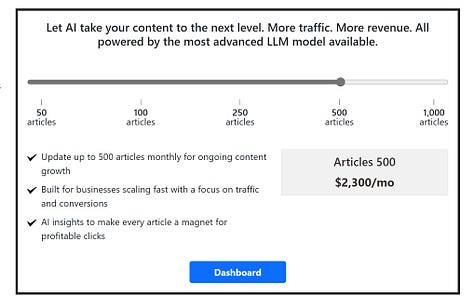
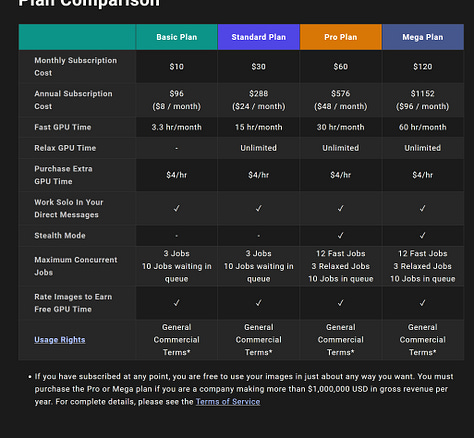
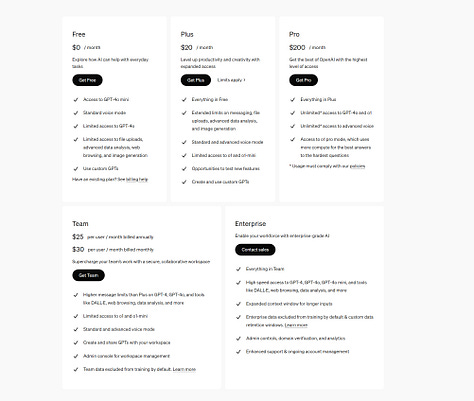
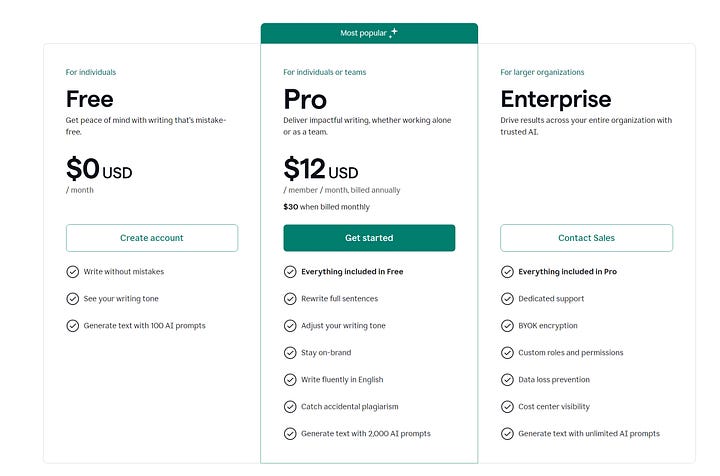
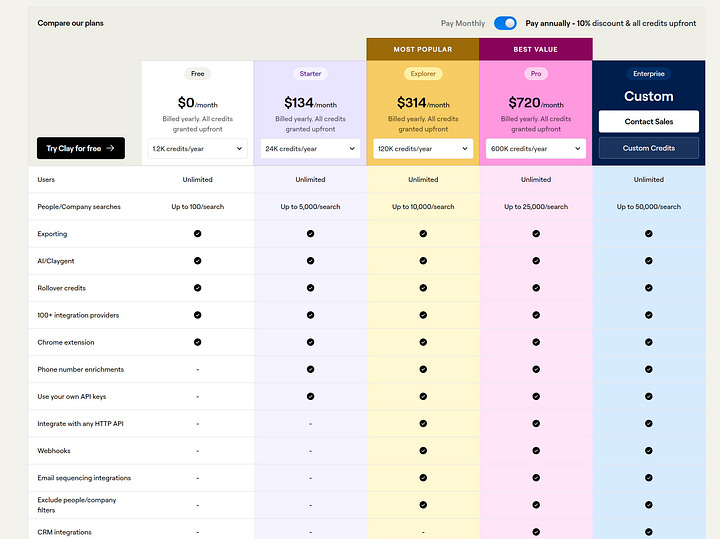
Oleksandr Gamaniuk is an entrepreneur and tech innovator based in Kyiv, Ukraine. He is the Founder of BOTMAKERS LLC, a company focused on artificial intelligence solutions. With a background in building and scaling marketplaces, Oleksandr has previously led two successful platforms to reach 2 million users.

